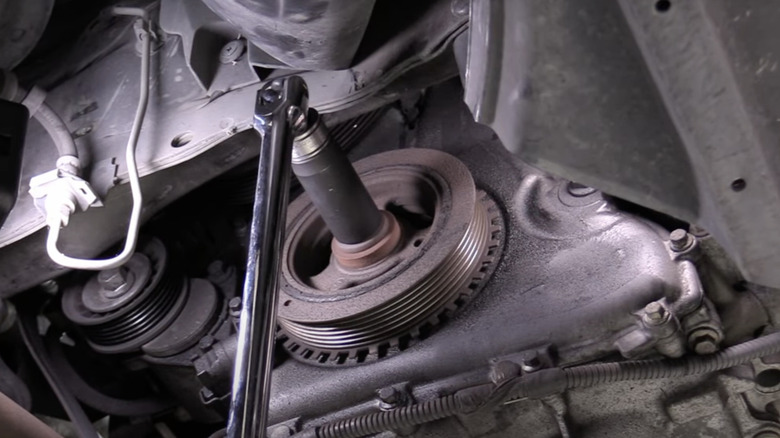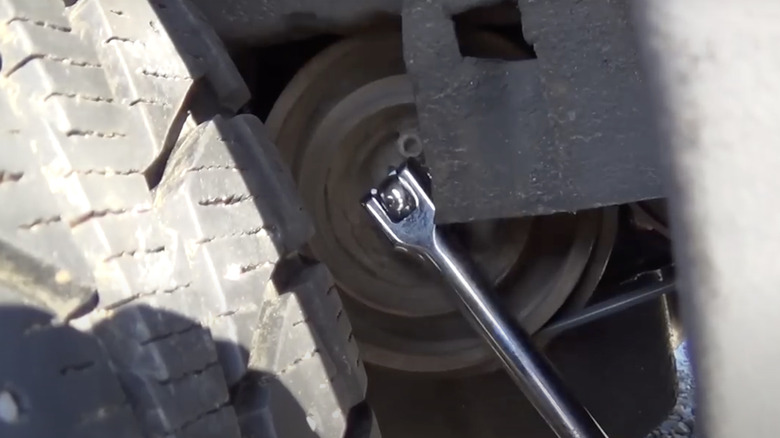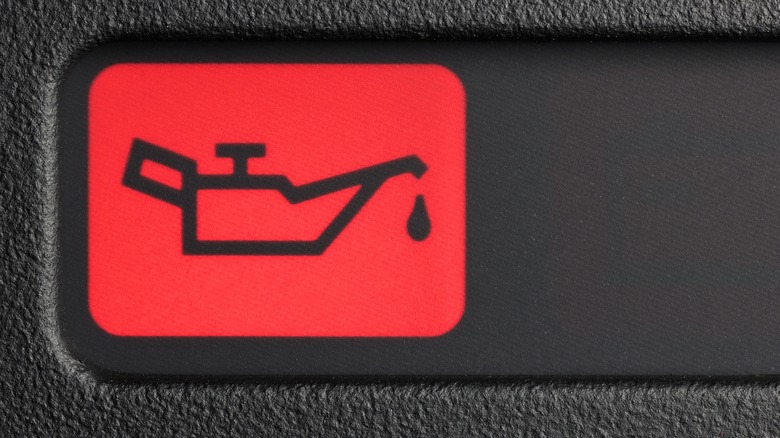How To Tell If Your Engine Is Seized (And How To Avoid It)
In my 53 years, I have destroyed a shocking number of engines. Some died from neglect of routine maintenance, some expired from old age and high mileage, and others suffered a failure of a critical component like the oil pump. The cost of replacing some of those failed engines was what led me to become a mechanic for most of my 30s, and I have not had a car engine die on me since then. Part of the reason for that is that I simply learned to pay more attention to the warning signs of an impending engine failure, and how to take action to slow or prevent that development.
An engine seizes when the internal components like bearings or pistons become damaged and prevent the engine from turning freely, but how do you know when your engine has seized? What can you do to prevent it from happening in the first place? The most obvious sign is that your car will stop running, of course — either suddenly or gradually running worse over time. Unfortunately, many other less serious issues can cause your engine to stop running, from simply running out of gas to the point of failure for the fuel pump, distributor, or ignition coil.
You can try turning your engine by hand
There is a simple test you can do if your engine has seized, and will give you an idea of whether you need to start shopping for a rebuilt or remanufactured engine. Modern automobile engines have harmonic damper pulleys at the end of the crankshaft to help balance the vibrations that result from the combustive reactions inside the cylinders. The pulley is usually attached with a bolt, and you can use this bolt to turn the engine by hand. It's best to remove the serpentine belt or accessory V-belts first, because a seized alternator or power steering pump can also stop your engine from turning freely if the belts are connected and tensioned properly.
Removing the belt(s) that connect these accessories will isolate the crankshaft and camshaft. These two shafts are connected via your timing belt or chain, which is far less accessible than the external accessory belts. Don't loosen or remove the timing belt; you want to make sure your crank and camshafts are turning in sync to prevent a different kind of catastrophic failure of the engine. Find the correct sized socket for the harmonic damper bolt, attach a breaker bar to it.
Put your car in park or neutral and chock the wheels before turning the engine by hand
You can also use a ratchet handle, but you might have to slip a piece of pipe over the handle to get enough leverage to turn the engine. Also make sure the transmission is not in gear, as this will mean you'll have to move the car to rotate the engine. If your car has an automatic transmission, putting it in park is best. If you have a stick shift, leave it in neutral.
Make sure the emergency brake is on securely and the wheels are chocked. Removing the spark or glow plugs will release the engine compression and make this test easier to do, but is not absolutely necessary. With the socket and breaker bar attached to the pulley bolt, turn the engine clockwise and see if it spins freely. Turning counterclockwise may loosen the crank pulley bolt — if that happens, just tighten it up again before moving on. You can sometimes even turn the pulley with your hands without even using tools.
Pay attention to your gauges and dash lights while driving
Obviously this is easier to do on a smaller engine than on a big or small-block V8. If the engine turns, your problem is likely with the fuel or ignition systems. If you can't turn the engine with tools or by hand, it's possibly time to find a clean rag to weep into, as your engine is seized.
Should you decide to have your engine rebuilt or replace it with a crate engine, what can you do in the future to make sure this doesn't happen again? Engine seizures are usually caused by either insufficient lubrication or overheating, both of which will damage critical internal components. The simplest thing you can do is to change your oil and filter regularly, and make sure your cooling system is filled and working properly.
If you're driving and the temperature gauge reads higher than normal, you can turn on the cabin heater to pull excess heat from the engine compartment. If your oil pressure light comes on, pull over immediately and have your car towed to a shop. Low oil pressure can be a sign of a faulty oil pump or even sometimes just an indication that your oil level is very low. Overheating can happen when your thermostat isn't opening at the right temperature, the radiator or cooling passages are clogged, or the fan or water pump belts are too loose.



